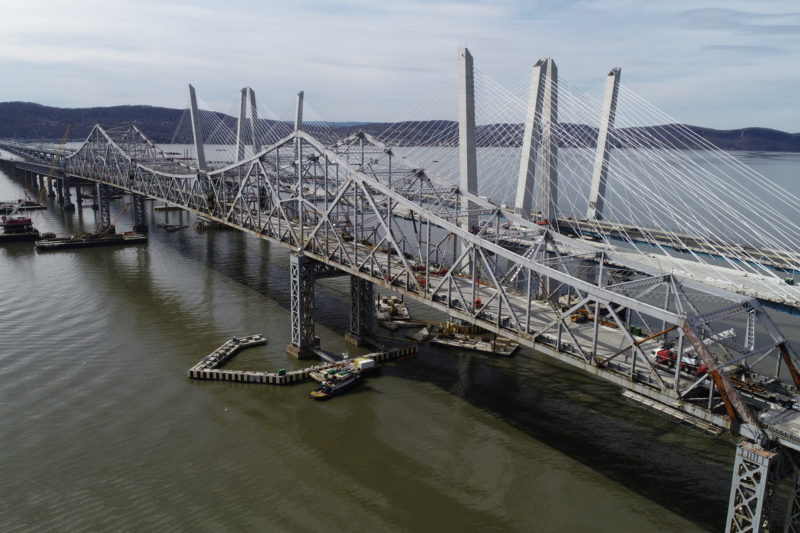Tugboats are hauling away pieces of New York’s Tappan Zee Bridge, the 63-year-old Hudson River span now destined for the bottom of the ocean.
With the approaching completion of the new Mario M. Cuomo Bridge, the state Thruway Authority and partner agencies are preparing to put more than 43,000 cubic yards of old steel and concrete onto six artificial reef locations around Long Island.
Beginning this month the project will deploy 33 barges of recycled bridge materials and 30 assorted old tugboats, barges and scows from the Erie Canal and other waterways. All have been cleaned of potential contaminants, to be emplaced as prime habitat to support New York’s big recreational fishing industry.
“As the largest artificial reef construction program in state history, these efforts will increase New York's marine biodiversity, provide new habitats for a variety of coral and fish, and support a growing tourism industry that brings thousands of anglers and travelers to Long Island's pristine waters every year,” Gov. Andrew Cuomo said in announcing the program April 17.
The three-mile Tappan Zee crossing carried up to 140,000 vehicles daily and the need for a new span became increasingly apparent by the turn of the century as the roadway deck deteriorated. The $3.98 billion project started in 2013, and was marked by tragedy when the tugboat Specialist allided with a construction barge at the site and sank with the loss of three crewmen in March 2016.
After dismantling, large sections of the old bridge deck have gone north to the Port of Coeymans near Albany – which also served as the staging area for new bridge components – for recycling and re-use. The concrete and steel from the 1955 support structure will go onto the reefs, along with old steel pipe from other state transportation projects.
Transportation costs around $5 million are being paid by Tappan Zee Constructors, the consortium building the new spans and the New York State Power Authority that controls the state Canal Commission which is supplying old vessels for scuttling on the reefs.
On the sandy nearshore continental shelf, artificial reefs and attract and hold substantial numbers of fish, soon after newly sunk materials become colonized by marine growth. Both New York and New Jersey have longstanding programs, assisted by donations of old vessels and funding from fishermen and the maritime industry.
There is a long history of regional transportation projects adding to the reefs as well. Bedrock blasted and dug from New York City subway tunnels, and the more recent deepening of the Kill Van Kull channel between New York and New Jersey, ended up offshore, as have obsolete city subway cars.




